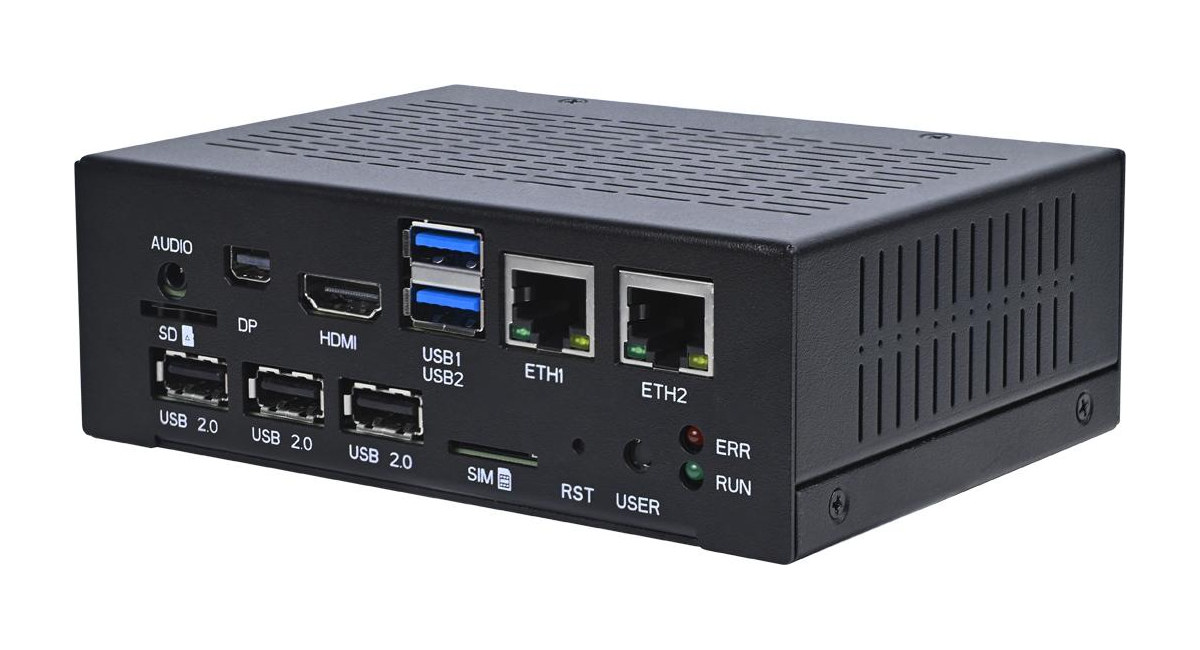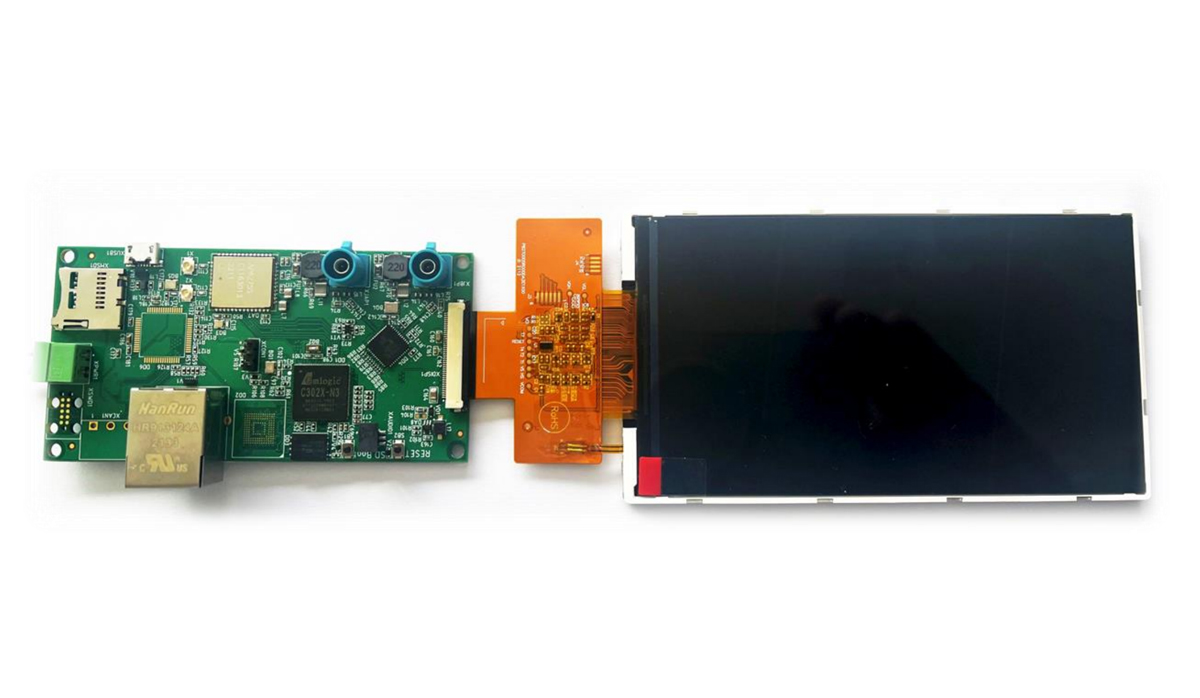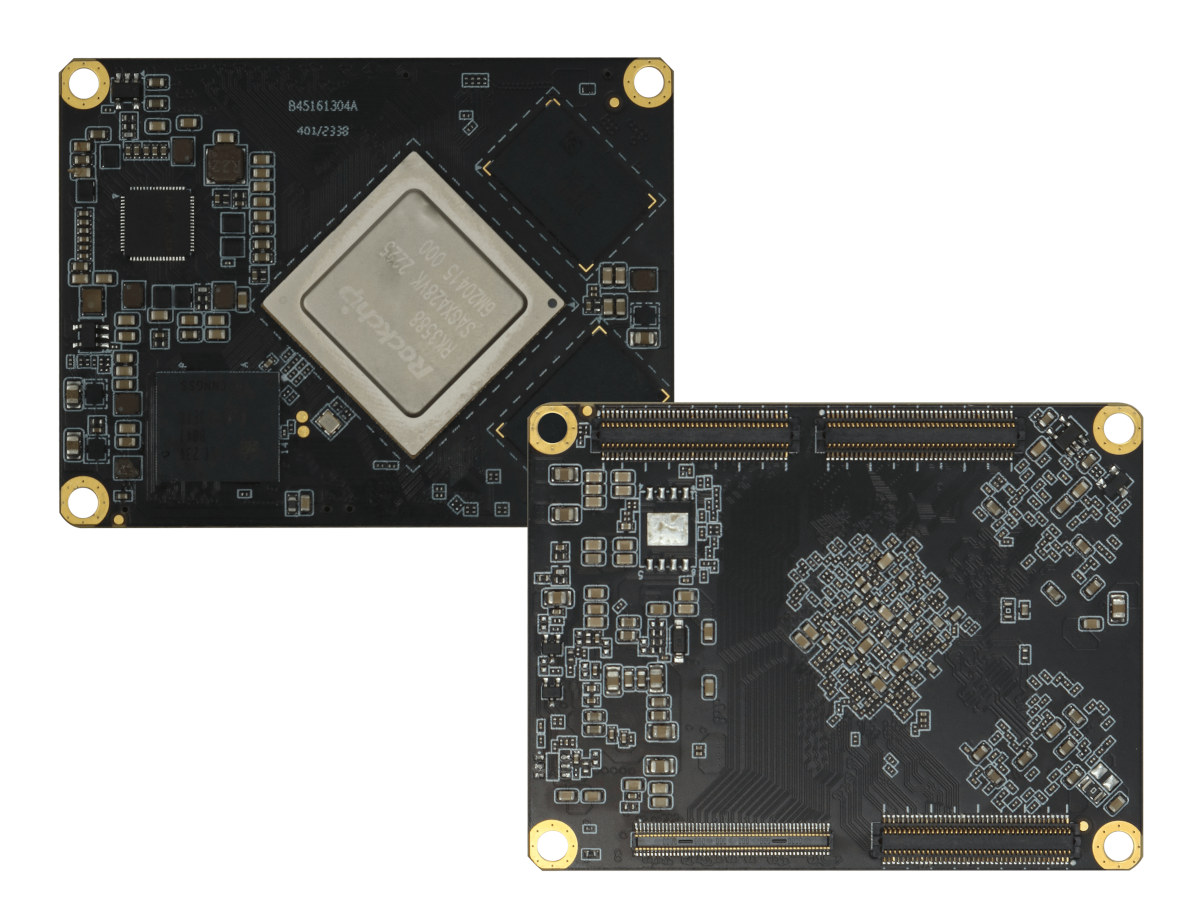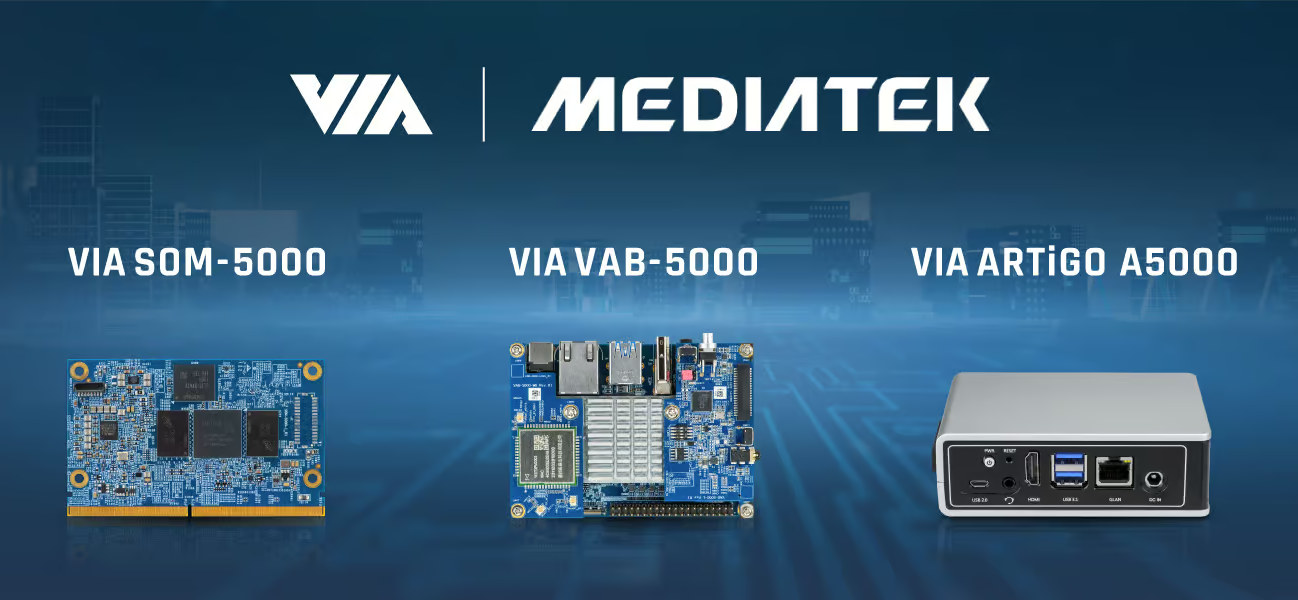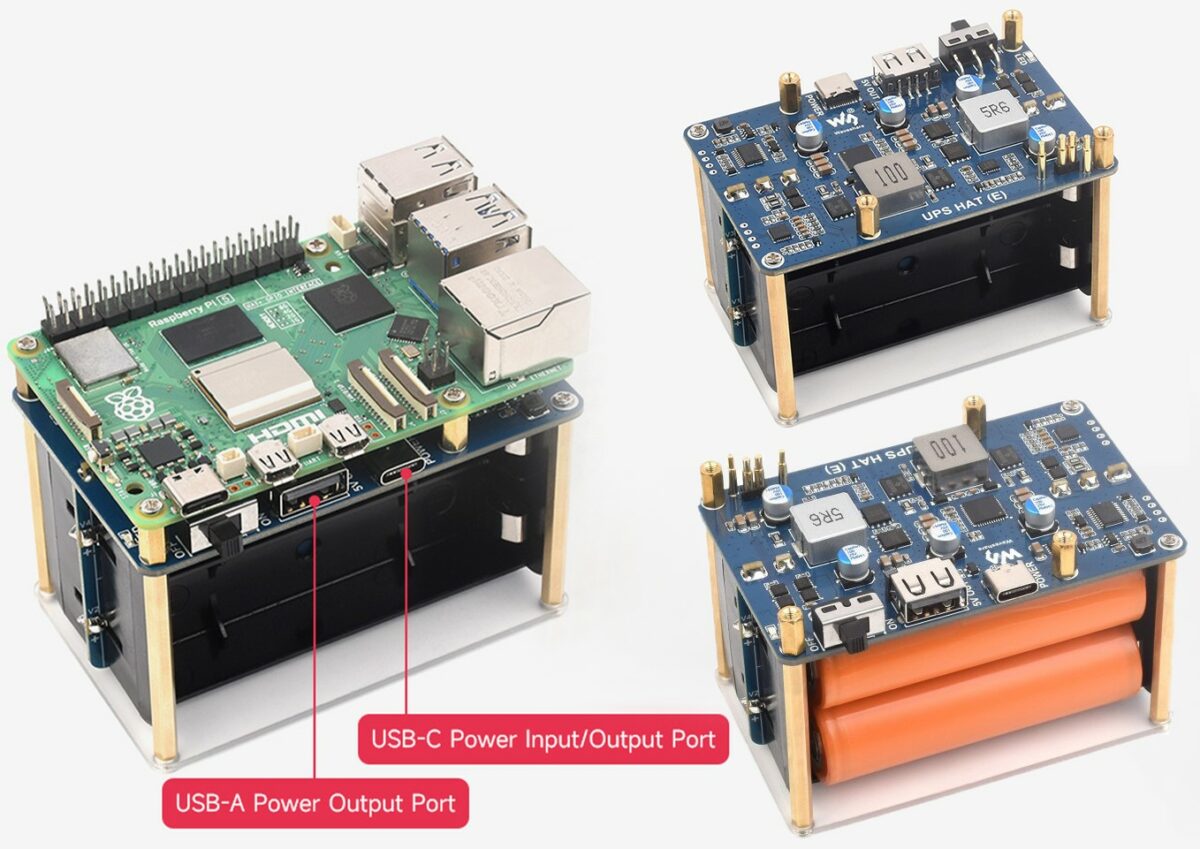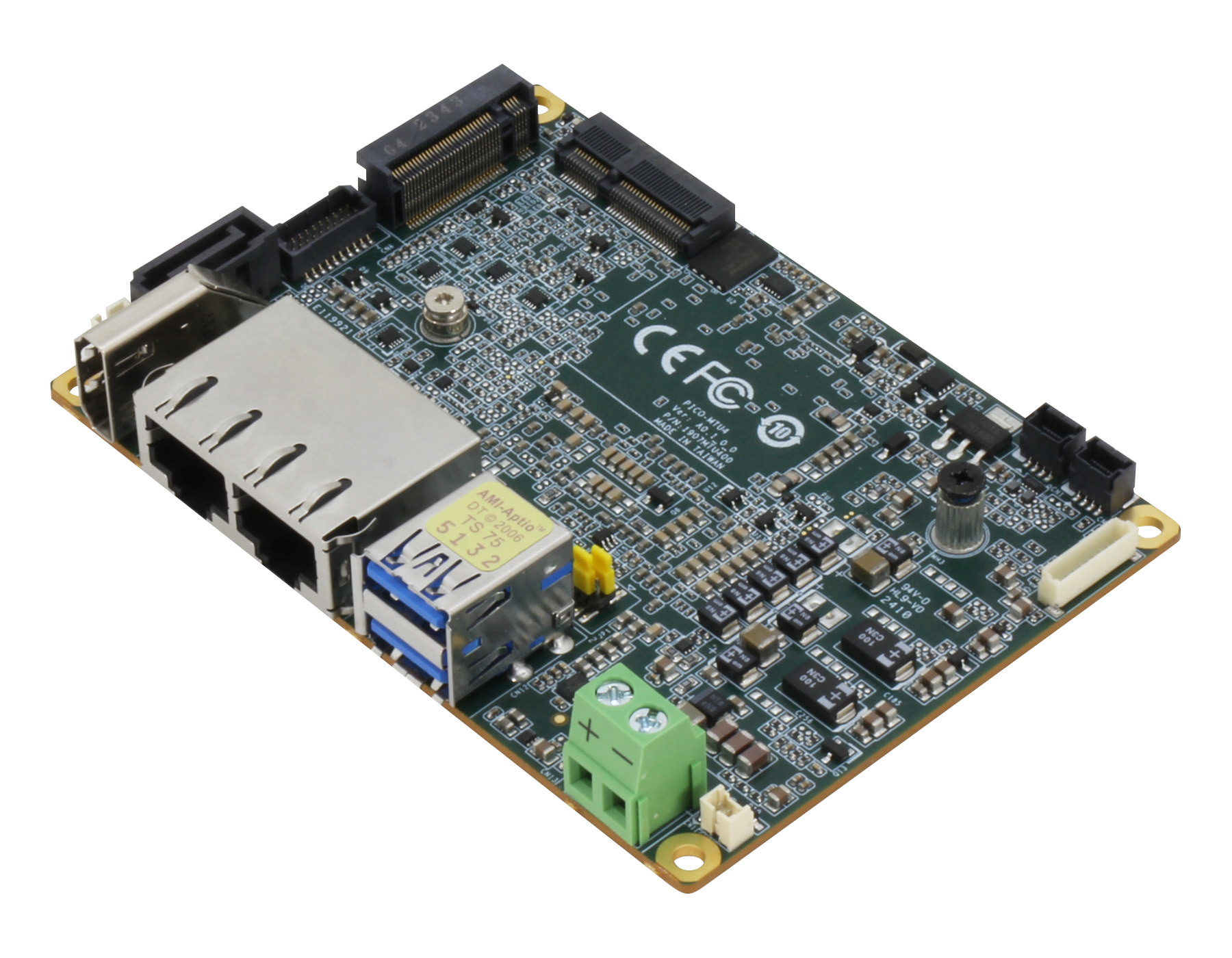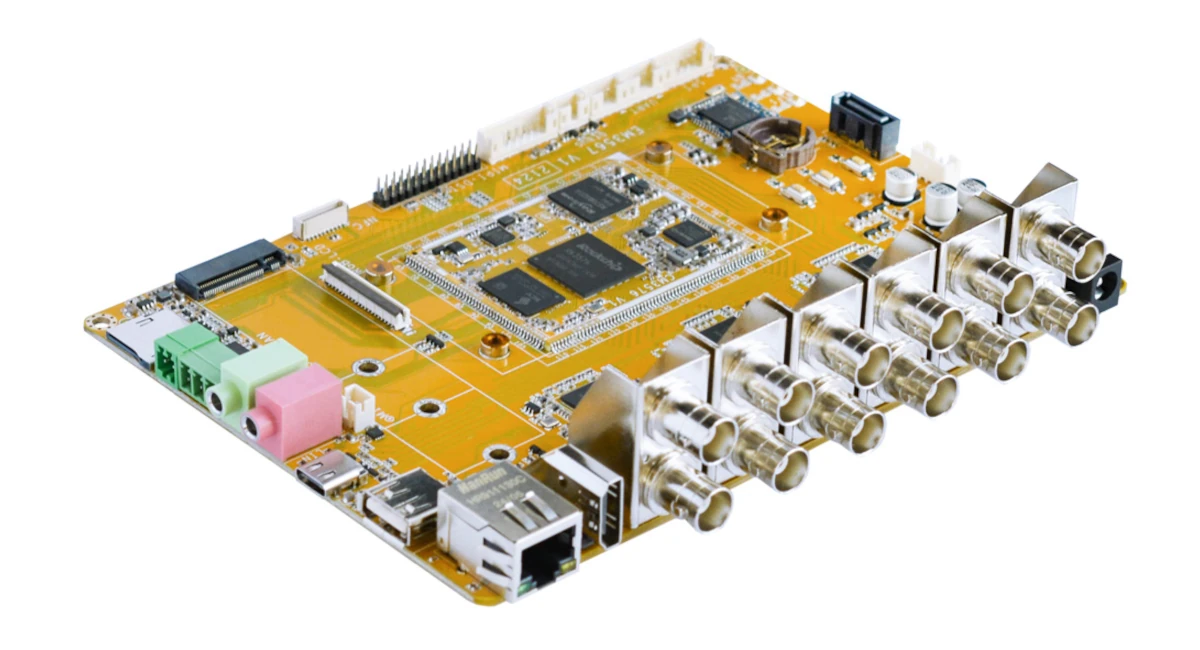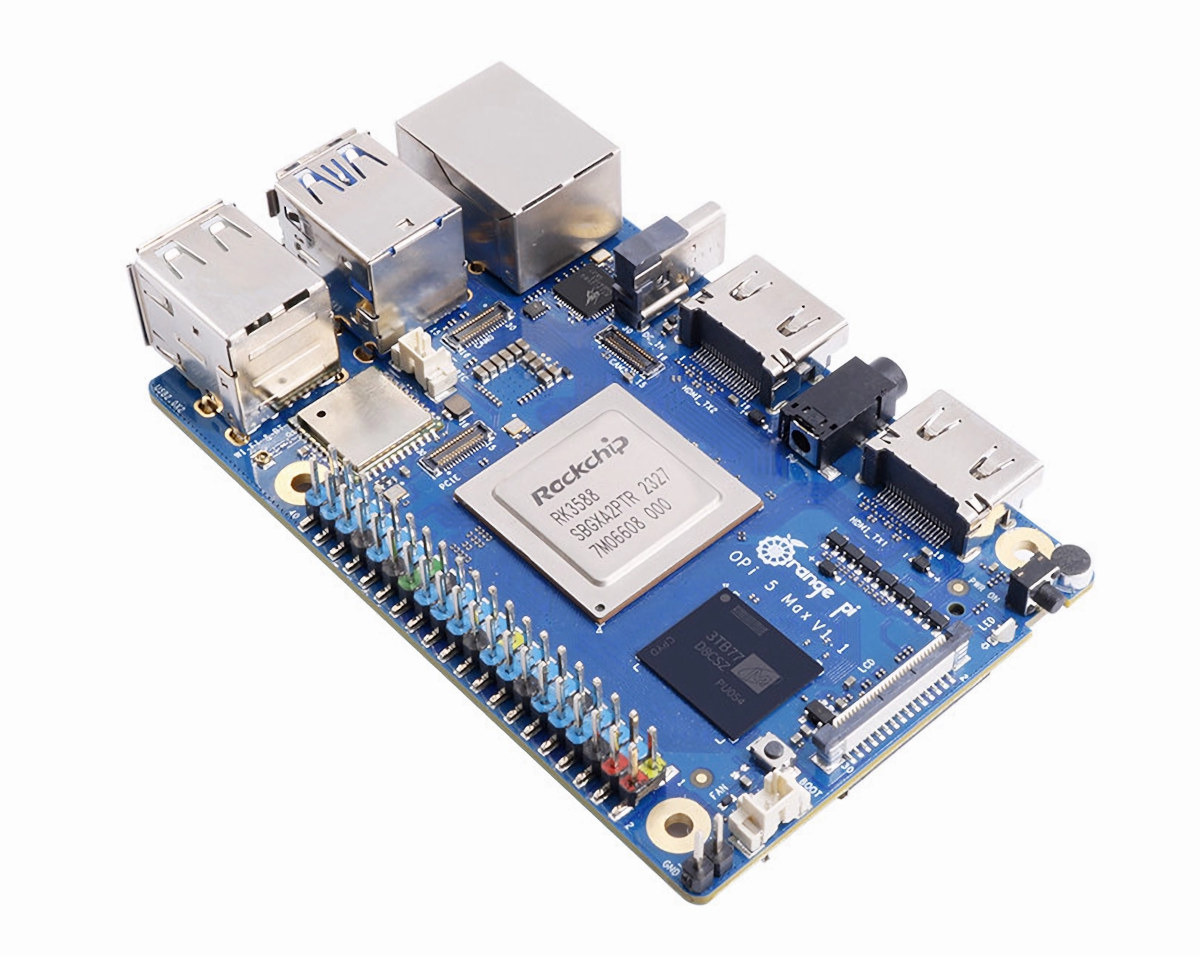MYiR MYD-LR3568-GK-B is a fanless industrial PC Box powered by Rockchip RK3568 quad-core Cortex-A55 Ai SoC with up to 4GB RAM, 32GB GB eMMC flash, support for M.2 NVMe storage, and communication interfaces such as RS232, RS485, and CAN Bus. The device also offers dual gigabit Ethernet and optional WiFI, BLE, and 4G LTE connectivity, two video outputs, and five USB ports with a set of features and capabilities that makes it suitable for edge AI, video analytics, industrial control, protocol conversion, communication management, and more. MYiR MYD-LR3568-GK-B specifications: SoC – Rockchip RK3568J CPU – Quad-core Cortex-A55 processor at up to 1.4 GHz (An “overdrive” version at 1.8 GHz is available upon request) GPU – Mali G52 2EE GPU with support for OpenGL ES 1.1/2.0/3.2, OpenCL 2.0, Vulkan 1.1 VPU 4Kp60 H.264, H.265, VP9, 1080p60 MPEG-4/-2/-1, VP8, and VC1 video decoder 1080p60 H.264/H.265 video encoder AI accelerator – Up to […]
Amlogic C302X embedded AI camera kit features GMSL2 connectors, Ethernet, WiFi, BLE, and CAN Bus interface
The DAB Embedded CAMKIT-AML302-IMX462, is a compact AI camera kit built around the Amlogic C302X processor with 256MB DDR3 on-chip (SiP) and designed for image processing and machine learning applications. The board also includes GMSL2 interfaces that add support for a range of Sony camera sensors, including global shutter and 3D options. Additionally, it has 100Mbit LAN, Wi-Fi, BLE, and CAN bus connectivity which makes this board useful for various computer vision applications. Previously we have written about similar camera kits including the Pivistation 5, the OpenCV AI Kit Lite, the e-con Systems 360° Camera Kit, and much more Feel free to check those out if you are interested in the topic. DAB Embedded CAMKIT-AML302-IMX462 specifications Processor – Amlogic C302X CPU – Dual Core ARM Cortex-A35 2 TOPS Neural Processing Unit (NPU) OpenCV (Hardware Accelerator) Video Encoder – H.264/H.265/JPEG ISP – High-performance, up to 5MP with HDR System Memory – 256MB […]
Dusun DSOM-042R is a Rockchip RK3588M system-on-module for “automotive AIoT” applications
Dusun DSOM-042R is a system-on-module based on Rockchip RK3588M automotive-grade AI SoC with 8GB RAM and 128GB eMMC flash, capable of operating in the -40°C to 85°C temperature range, and fitted with four high-density connected exposes the many interfaces from the octa-core Cortex-A76/A55 processor. We first found out about the RK3588M SoC last year with the Firefly AIO-3588MQ board also comprised of a system-on-module and carrier board with support for up to sixteen cameras and up to six Full HD displays to drive the car dashboard, in-vehicle infotainment, a digital rearview mirror, headrest monitors, ADAS system, and more. We hadn’t noticed other manufacturers launch a product with the automotive-grade RK3588M, and the DusunIoT DSOM-042R offers another option. Dusun RK3588M SoM specifications: SoC – Rockchip RK3588M octa-core processor with CPU – 4x Cortex-A76 cores @ up to 2.1 GHz, 4x Cortex-A55 cores @ up to 1.7 GHz (frequencies TBC) GPU – […]
VIA launches MediaTek Genio 700 SMARC SoM, Pico-ITX SBC, and fanless Edge AI embedded system
VIA Technologies has launched three new Edge AI solutions based on the MediaTek Genio 700 mid-range Cortex-A78/A55 AI SoC with the SOM-5000 SMARC 2.1.1 system-on-module, VAB-5000 single board computer (SBC), and ARTiGO A5000 fanless embedded system. All three platforms come with 4GB or 8GB LPDDR4 memory, 16GB eMMC flash, gigabit Ethernet, video interfaces, and camera inputs, and are designed for intelligent edge computing across a range of industrial, commercial, and consumer applications. VIA SOM-5000 system-on-module Specifications: SoC – MediaTek Genio 700 (MT8390) CPU – Octa-core processor with 2x Cortex-A78 cores @ up to 2.2 GHz, 6x Cortex-A55 cores @ up to 2.0 GHz GPU – Arm Mali-G57 MC3 GPU with support for OpenGL ES 1.1/2.0/3.2, OpenCL ES 2.2, and Vulkan 1.0/1.1 APIs VPU Encoding up to 4Kp30 with H.265/HEVC or H.264 Decoding up to 4Kp75, AV1, VP9, HEVC, H.264 codecs supported AI accelerator – Mediatek DLA + VP6 with INT8, […]
Waveshare UPS HAT (E) for Raspberry Pi 5/4/3B+ takes four 21700 Lithium batteries, supports USB PD 3.0
The Waveshare UPS HAT (E) is a UPS expansion board for Raspberry Pi 5/4B/3B+ that supports four 21700 Lithium batteries and includes a battery fuel gauge IC for monitoring voltage, current, and capacity. The USB Type-C port is compliant with the PD 3.0 standard and allows for 40W fast bi-directional charging, and a high-power buck chip provides a 5V/6A output. Additionally, it supports I2C for real-time status updates. Previously, we wrote about the wider SupTronics Raspberry Pi 5 UPS HAT, which supports four 18650 batteries and delivers up to 5V with a higher current output of 5A. This HAT has no Type-C support and uses a DC jack and XH2.54 connector for 6V-18V input. Feel free to check it out if you’re interested in this product. Waveshare UPS HAT (E) specifications: Compatibility – Raspberry Pi 5 / 4B / 3B+ USB Interfaces USB Type-C Input/Output – Supports multiple voltage levels […]
AAEON PICO-MTU4 Pico-ITX SBC features Intel Core Ultra 5/7 “Meteor Lake” SoC
The AAEON PICO-MTU4 Pico-ITX SBC may be the world’s smallest platform based on 14th Gen Intel Core Ultra 5/7 SoCs part of the Meteor Lake-U family and follows the company’s UP Xtreme i14 SBC introduced a couple of months ago with the same processors, although the new model is limited to 15W parts due to its small size (100x72mm). The Core Ultra 5/7 Pico-ITX SBC comes with up to 64GB DDR5 memory, supports NVMe and SATA storage, offers 2.5GbE and GbE networking, M.2 Key-M and Key-E sockets for storage or/and wireless expansion, dual display support through HDMI and eDP, a few USB interfaces, and two RS232/RS422/RS485 interfaces. AAEON PICO-MTU4 specifications: Meteor Lake-U SoC (one of the other) Intel Core Ultra 7 165U 12-core (2P+8E+2LPE) processor @ 1.7 / 4.9 GHz with 12MB cache, Intel 4Xe LPG graphics @ 2.0 GHz, Intel AI Boost NPU; TDP: 15W Intel Core Ultra 7 […]
Rockchip RK3576 castellated SoM powers development board with 12 analog camera inputs
Boardcon CM3576 is a system-on-module (SoM) Rockchip RK3576 with castellated holes that also powers the company’s EM3576 development board with 12 analog camera inputs among a range of other interfaces. We covered a few Rockchip RK3576 platforms in recent weeks including the Firefly ROC-RK3576-PC and Banana Pi BPI-M5 SBCs, and another system-on-module with the Forlinx FET3576-C with four 100-pin board-to-board connectors. The Boardcon CM3576 offers another option as a solderable SoM with castellated edges. Boardcon CM3576 SoM Specifications: SoC – Rockchip RK3576 CPU 4x Cortex-A72 cores at 2.3GHz, 4x Cortex-A53 cores at 2.2GHz Arm Cortex-M0 MCU at 400MHz GPU – ARM Mali-G52 MC3 GPU with support for OpenGL ES 1.1, 2.0, and 3.2, OpenCL up to 2.0, and Vulkan 1.1 NPU – 6 TOPS (INT8) AI accelerator with support for INT4/INT8/INT16/BF16/TF32 mixed operations. VPU Video Decoder – H.264, H.265, VP9, AV1, and AVS2 up to 8Kp30 or 4Kp120 Video Encoder – […]
Rockchip RK3588-powered Orange Pi 5 Max SBC features up to 16GB LPDDR5, 2.5GbE, onboard WiFi 6E and Bluetooth 5.3
Initially teased at the Orange Pi Developer Conference earlier this year, the Orange Pi 5 Max SBC powered by a Rockchip RK3588 SoC is now available on Amazon and Aliexpress for $95 and up with 8GB or 16GB LPDDR5, and support for eMMC flash modules or soldered on eMMC flash. A 4GB RAM version is also planned for $75. The Orange Pi 5 Max is basically a cost-down version of the Orange Pi 5 Plus with fewer interfaces (e.g. 1x 2.5GbE vs 2x 2.5GbE, no HDMI input, etc..), higher bandwidth LPDDR5 memory, onboard WiFi 6E and Bluetooth 5.3, and a smaller form factor between Pico-ITX and credit card size. Orange Pi 5 Max specifications: SoC – Rockchip RK3588 CPU – Octa-core processor with 4x Cortex-A76 cores @ up to 2.4 GHz, 4x Cortex-A55 cores @ up to 1.8 GHz Arm Mali-G610 MP4 GPU with support for OpenGL ES1.1/2.0/3.2, OpenCL 2.2, […]


